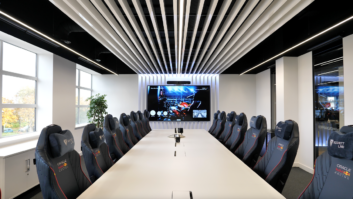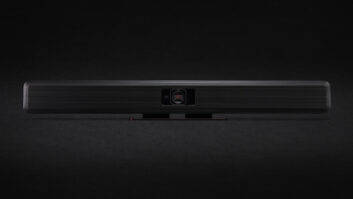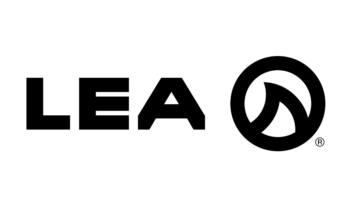Health and safety legislation is caught between the proverbial rock and a hard place. When accidents happen people call for tighter health and safety control, but for the remainder of the time it’s generally regarded as part of the red tape companies must negotiate – a generator of paperwork, much of which simply ratifies common sense.
“It’s something that needs to be in place, both from a legal point of view and from a social one, too. Having said that, I do believe that there’s an awful lot of red tape,” says Flemming Westphalen, health, safety, quality and environment manager for UK pro-AV integration company Asysco. “On some sites we visit there’s a mandatory requirement for personal protective equipment so when I do a site audit I have to wear gloves, glasses and a hard hat – the whole lot – and I sometimes think it’s not actually needed. Having said that, it’s probably easier to control if everybody’s wearing it.”
This approach, he explains, isn’t based directly on legislation, it’s often company policy. “The legislation itself is actually quite flexible. It’s up to you to decide what you need to do and how you should be doing things, as long as you do a risk assessment based on that.
“What companies do is take a decision that things will be implemented at a blanket level with the excuse that it’s all down to the legislation, which it’s not, but that’s seen as a way around having to produce more detailed schemes.”
Andy Bonehill, technical director of PAI Group, agrees with Westphalen but thinks that a misunderstanding – perhaps wilful – of what’s required can further cloud the issue. “For people who know nothing about health and safety legislation and who want to carry on as they’ve always done, then it will be seen as a barrier. But as an operator in the 21st century it’s just one of those things you need to take on board. The most important thing is to operate within the essence of the legislation and probably not worry too much about what consultants tell you that you need in terms of paperwork.
“Paperwork is important, but I think what’s lacking from what most health and safety consultants put together is any depth of thinking. It’s all too easy to open a file on a computer and print it out – but that’s not health and safety management, that’s just getting the words on paper. Those papers often just get shoved in a desk without anyone ever reading them. Then you go on site and there are people using welding gear in close proximity to other workers, and there are places from which you could fall. The whole thing becomes what people make of it and people should be making more of it.”
“The paperwork’s important but so is the essence of the law,” adds Bonehill. “The fact is that we have to consider health and safety – it’s like taking out insurance on your car, you only need it when something happens. It’s all about saving lives, keeping people safe and looking after your staff.”
“Health and safety requirements are meant, generally, to be the same across Europe, but they’re not,” continues Westphalen. “Once again it’s coming back to the implementation and that’s not always uniform. And the policing isn’t the same either. I’m from Denmark where it works completely different to, say, the UK. Basically, it’s all down to the various ways in which each country interprets the legislation that comes out of Brussels. The UK is one of the strictest countries. There’s a divide between Eastern Europe and Western Europe, and between north and south.”
Jan Setterberg, of Sweden’s Soliflex, agrees that standards and implementation are not uniform across Europe – it’s not even uniform across Sweden, he says. “In Sweden you need to know what you’re doing or you could be in really deep trouble. As a consultant I always work very closely with the electrical installer and they usually set the standard for a site. We have rules but there seems to be variations from place to place. Voice alarms are a good example – you can have a situation in which the person inspecting a voice alarm doesn’t know what he’s looking for. People write a lot of rules but often contractors don’t know them.
“In Stockholm they’re really keen on using fire-retardant cabling, while in Gothenburg they’re not so serious about that but they want you to have two systems in one location so if one fails there’s a backup. You should have both dual systems and fire-retardant cables but when you have really tough competition this can result in contractors twisting the rules because they know the inspectors don’t know what to look for.”
Knowledge needed
This level of ignorance among those that should be policing standards is something that Setterberg is keen to highlight as a problem. “We put up a lot of rules and laws in Sweden but the market fairly quickly grasps that no one understands them so they can often be forgotten. However, when knowledgeable inspectors are calling on a regular basis, people realise that some things need to be followed clearly.
“For example, you must have a certificate to use a sky lift in Sweden but people will say they know how to use one and up they’ll go – there’s no certificate in sight. You need to be practical as the rules can be a little overwhelming. We have more rules than we can really handle.
“A friend of mine from the UK said ‘we take all this very seriously’ but I told him ‘this is Sweden – you’ll have to adapt’. It all comes down to us having too many rules – there’s a limit as to what you can digest.”
He continues: “I think most practical contractors use common sense, which means they follow the written rules that comply with their thinking. Those that don’t embody common sense get pushed to one side.
“The only set rules in Sweden are that you need shoes with protection for your toes and you need to wear a hard hat or you won’t get into a site. Some installers who recently came to work on an ice hockey arena had people yelling at them to get out – they looked confused but they had to have helmets on.”
Competition concerns
In among the confusion about what is and isn’t the letter of the law, and what is down to interpretation, there are concerns that the weight of health and safety legislation can become anti-competitive. But Westphalen disagrees: “The legislation isn’t anti-competitive and it shouldn’t get in the way of how we operate – it should all be common practice by now. Having said that, I do think there are a lot of companies that have health and safety high up their list until the deadlines arrive and then it goes out the window. They like to believe in health and safety but the final figures are more important.
“So it’s good when you come across a company that really believes in health and safety and in general this approach doesn’t cost any extra. Certainly, in the long run it’s going to be cheaper because you’re less likely to be prosecuted. Also, companies that are not as hot on health and safety might find it more difficult to abide by the requirements of the main contractor or client,” he adds.
One issue that Westphalen highlights is the migration of labour across Europe, from east to west. “One of the main problems for the UK is the influx of non-English-speaking workers. This can make it very difficult to implement health and safety requirements.”
However, despite all the issues raised by health and safety legislation – its interpretation and implementation – Asysco has faired very well, garnering awards and industry accolades for its standards (see box out, right). “We’ve done very well recently – we have an overt commitment to health and safety,” Westphalen explains.
PAI’s commitment is part of a new thinking, according to Bonehill, who cites past research to support his case. “There was a very interesting report I read a couple of years ago that quoted a lot of old heads – people who’d set up business in the 1980s and earlier – saying how beleaguered they were with red tape. But there’s been a new breed of business set up in the past 10 years that just gets on with it; you don’t hear them moaning and groaning about things. It’s not so much about the legislation – it’s more to do with the way you deal with it.
“That’s not to say that everything’s fine – there is too much red tape, especially when you look across the whole gamut of the legislation, including employment law. It certainly is a barrier to entrepreneurship and creative thinking. It’s also a barrier to change – it’s like a bunch of heavy shackles at times, but if you think like that then you don’t get anywhere.”
The bottom line is that health and safety legislation should be an integral part of the thinking about any project, not something tagged on at the end or simply the recipient of lip service. It’s there for a reason – to protect employees and their employers. In that respect it’s a win-win situation. IE







